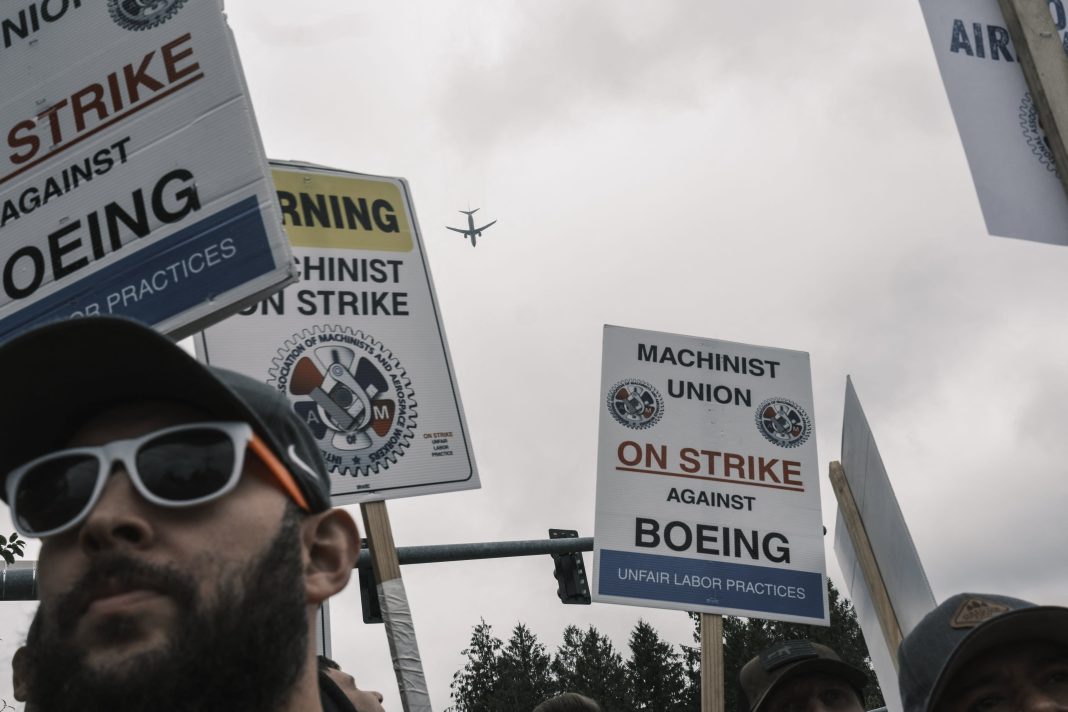As the clock ticks into the second week of a significant strike, Boeing finds itself at a crossroads, grappling with the implications of labor unrest that has brought much of its aircraft production to a standstill. A recent rally at the Boeing Portland facility showcased the determination of over 30,000 machinists, who have, for the first time since 2008, taken to the picket lines. Their message is loud and clear: they demand fair compensation that reflects the soaring cost of living in their region.
In a bid to resolve the impasse, Boeing has rolled out what it claims to be its “best and final” contract offer. This proposal marks a noteworthy shift, raising general wages by 30% over four years, a jump from a previously suggested 25%. Additionally, the ratification bonus has been doubled to a substantial $6,000, alongside the reinstatement of annual machinist bonuses and an enhanced 401(k) match. However, it’s important to note that this offer requires ratification by the looming Friday deadline, a stipulation that adds urgency to the negotiations.
Despite these enhancements, the International Association of Machinists and Aerospace Workers, representing the striking machinists, has remained silent on the latest proposal as of now. The stakes are high; Bank of America analyst Ron Epstein estimates that the strike is costing Boeing a staggering $50 million each day. This financial strain has led to significant operational changes, including the furloughing of nonunion workers and a hiring freeze, which could have lasting repercussions on the company’s workforce and production capabilities.
The backdrop to this strike is marked by a resounding 94.6% rejection of an earlier contract that the union had initially supported. Workers expressed their discontent not just with the numbers but also with the broader economic landscape. Many machinists articulated a collective frustration regarding their wages not keeping pace with the rapid inflation and rising living expenses in the Seattle area. Some have even begun to seek alternative sources of income, taking on side jobs such as food delivery and warehouse work, highlighting the desperation felt by many in the face of stagnant wages.
In conversations with the media, striking workers have conveyed a sense of resolve, indicating they are prepared for a protracted fight if necessary. This sentiment reflects a broader trend observed in labor movements across the country, where workers are increasingly willing to stand firm on their demands for fair compensation, especially in an economy that seems to leave many behind.
The implications of this strike extend beyond the immediate financial loss for Boeing; ratings agencies have cautioned that prolonged labor unrest could lead to a downgrade in the company’s credit rating. This could hinder Boeing’s ability to secure financing for future projects or investments, further complicating its recovery from past setbacks, including the fallout from the 737 MAX crisis.
As negotiations continue, the potential for a resolution remains uncertain. The pressure is mounting on Boeing’s new CEO, Kelly Ortberg, to navigate these turbulent waters and find a path forward that satisfies both the workers’ demands and the company’s financial health. The outcome of this strike could not only reshape the landscape for Boeing but also serve as a bellwether for labor relations in the aerospace industry and beyond.
For those following this developing story, the resolution—or lack thereof—will undoubtedly have ripple effects across the sector, affecting everything from production timelines to stock valuations. As we witness this labor movement unfold, it serves as a reminder of the intrinsic link between fair labor practices and the broader economic health of industries reliant on a skilled workforce.

